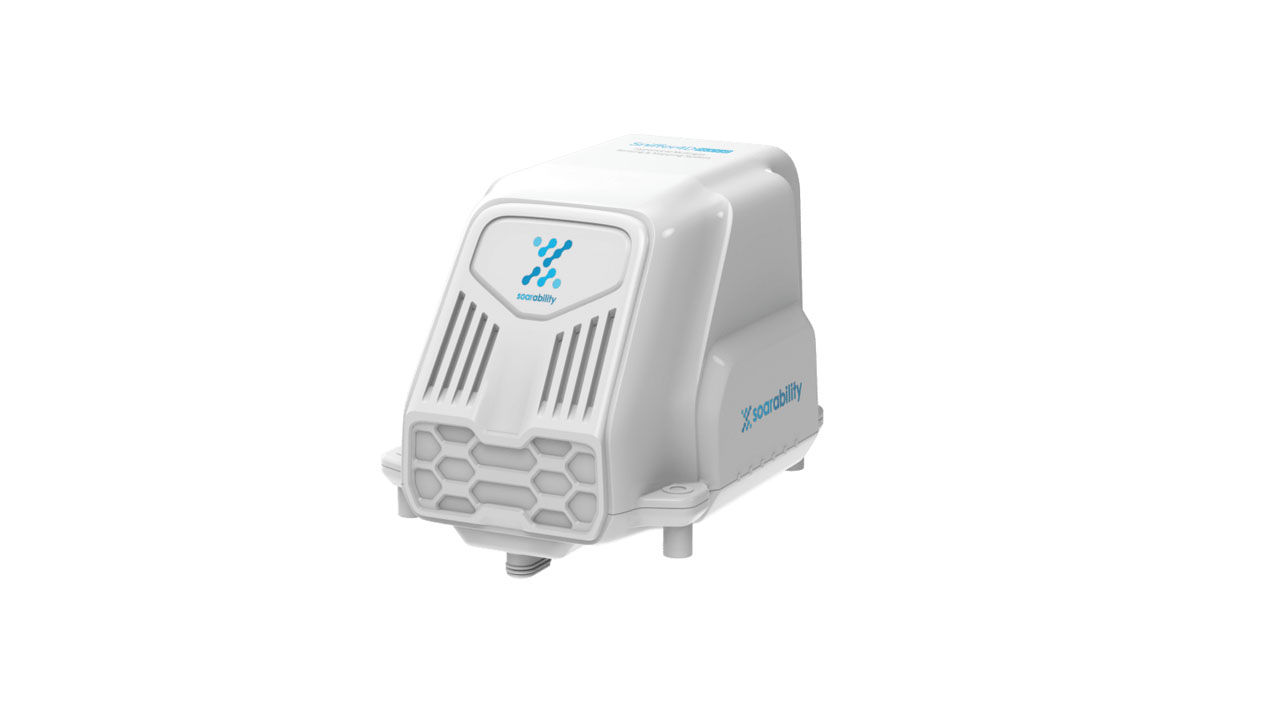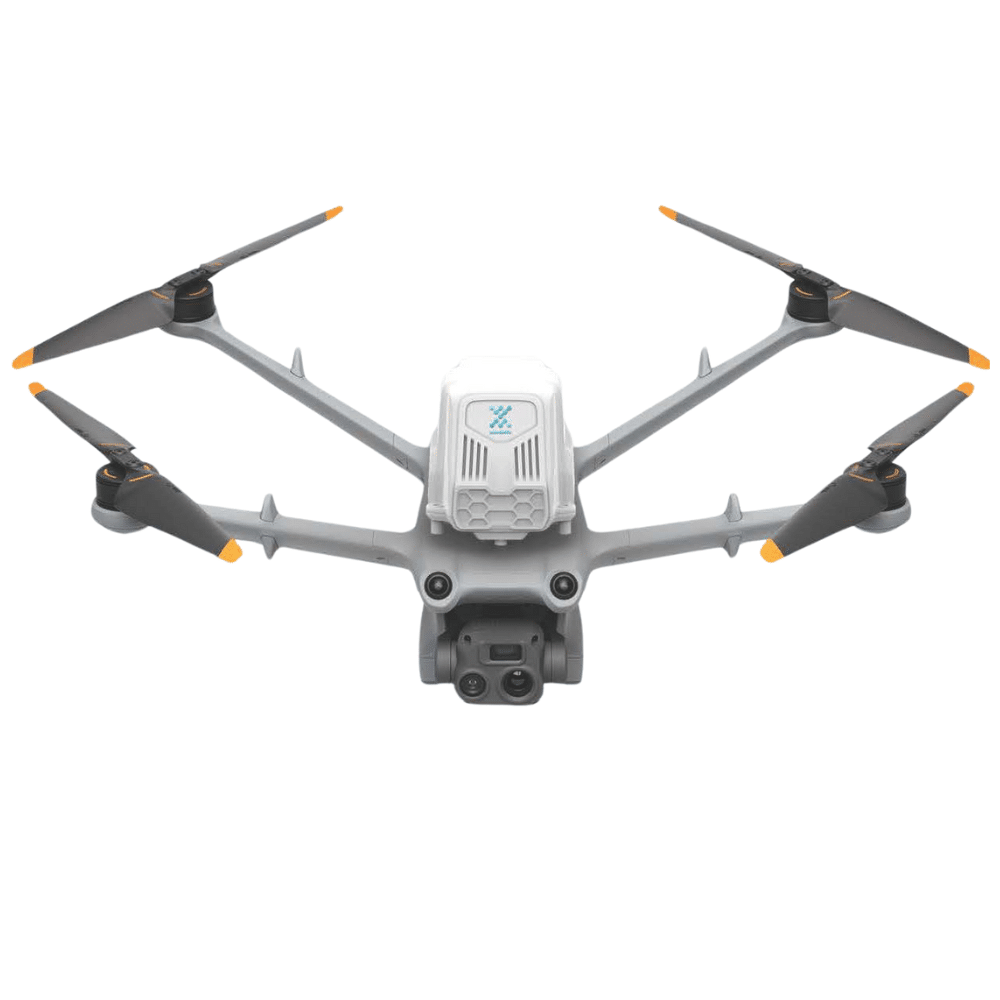Ultra Lightweight: Weighs less than 200 grams, facilitating easy transport and quick deployment.
High Compatibility: Seamlessly integrates with DJI Matrice 30/3D and Dock 2, ensuring robust operation without interference.
High-Resolution Methane Detection: Employs multi-path TD-LAS technology for high-precision methane detection up to 1 ppm.
Versatile Monitoring Capabilities: Suitable for a variety of applications such as greenhouse gases, ambient air monitoring, and oil & gas exploration.
Enhanced Data Analysis: Supports real-time and historical data analysis with advanced spatiotemporal mapping capabilities.
Extensive Device Control: Features built-in 4G/3G/EDGE/GPRS for comprehensive device management and data control.
Sniffer4D Nano 2
Compact and Versatile
The Sniffer4D Nano2 is a marvel of engineering, weighing less than 200 grams, making it one of the lightest in its class. This ultra-lightweight design does not compromise on capability. The device is robust enough to function seamlessly with advanced UAV systems like the DJI Matrice series, ensuring that it can be deployed in a variety of environments without technical interference. Whether it's monitoring greenhouse gases, surveying oil and gas pipelines, or responding to hazardous material spills, the Nano2 is built to handle a wide array of environmental monitoring tasks.
High-Precision Technology
At the heart of the Sniffer4D Nano2's capabilities is its advanced sensor technology. Utilizing multi-path TD-LAS (Tunable Diode Laser Absorption Spectroscopy), the device offers high-resolution methane detection up to 1 part per million (ppm). This precision is crucial for industries like oil and gas where accurate methane monitoring can prevent potential leaks and contribute to safer operations.
Enhanced Data Analysis
Beyond its monitoring capabilities, the Sniffer4D Nano2 excels in data processing and analysis. It is equipped with built-in 4G/3G/EDGE/GPRS for real-time data transmission, allowing environmental scientists and engineers to make informed decisions swiftly. The system supports a powerful suite of analytical tools, including real-time and historical spatiotemporal mapping. These tools provide users with detailed visual representations of data, enhancing their ability to track environmental changes over time and space.
Application Across Industries
The flexibility of the Sniffer4D Nano2 extends to its applications. It is not only a tool for industrial and scientific research but also adapts well to public safety operations, including HAZMAT response and landfill inspections. Its ability to provide immediate and accurate environmental readings makes it invaluable in emergency situations where time and precision are critical.
Future-Oriented and Eco-Friendly
Soarability's commitment to innovation is evident in the Sniffer4D Nano2's design, which prioritizes both functionality and environmental sustainability. By enabling more efficient monitoring and reducing the need for larger, more intrusive equipment, the Nano2 contributes to less environmental disruption and promotes a greener approach to industrial activities.
The Sniffer4D Nano2 stands out not only for its technical specifications but also for its contribution to advancing environmental monitoring. As industries worldwide strive for greater sustainability and operational safety, tools like the Nano2 will become indispensable. Its development marks a significant step forward in our ability to understand and protect the environments we live in and depend on.
Comparison table of the three major methane detection technologies used in field inspections:
Feature / Metric
OGI (Optical Gas Imaging)
TDLAS (Laser Absorption)
Gas Sniffers (PID, FID, etc.)
Detection
Infrared plume image
Methane-specific laser absorption
Chemical/electrical gas sensing
Output
Visual
Quantitative (ppm / ppm-m)
Quantitative (ppm)
Sensitivity
Moderate (<100 ppm)
High (ppb–ppm)
High (varies by sensor)
Methane Selectivity
Moderate (others detected too)
High (methane-tuned)
Variable
Quantification
No
Yes (with path length)
Yes
Range / Coverage
Moderate to wide
Long (10–250 m)
Point only
Real-Time
Yes
Yes
Yes
Conditions
Needs thermal contrast
Stable in most environments
Affected by weather
Automation
High (UAVs, robots)
High (UAVs, fixed units)
Low–Medium (handheld)
Remote Use
Excellent (standoff)
Excellent (remote possible)
Poor (manual, close-up)
Speed
Fast (area scan)
Fast (drones, long path)
Slow (point by point)
Cost
High ($80K–150K)
Medium ($10K–60K)
Low–Medium ($2K–20K)
Best Use
Visual leaks, LDAR, complex sites
Quantifying, monitoring, drones
Localized, indoor leaks
Regulatory Use
Accepted (OGI/Method 21 alt.)
Gaining approval for quantification
Standard Method 21







